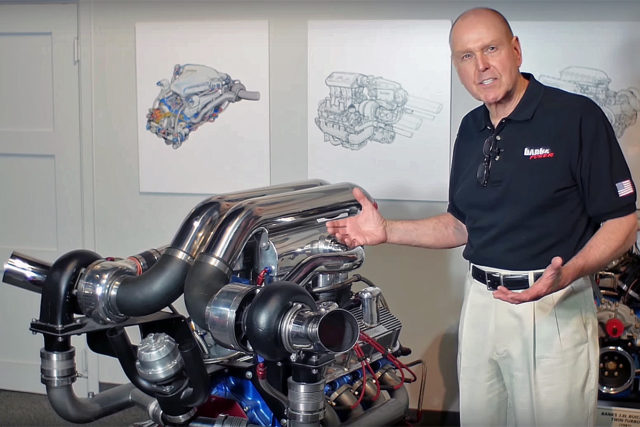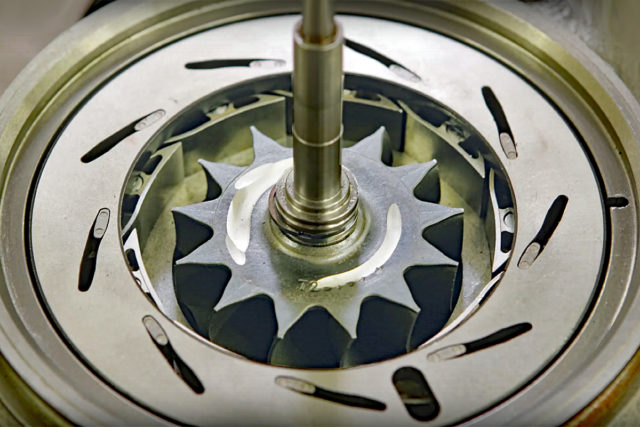Just east of Los Angeles is the city of Azusa, which Gale Banks calls home to his iconic company — Gale Banks Engineering. Under the Banks Engineering umbrella are four divisions, each dedicated to separate branches of the automotive performance aftermarket; Banks Power, Banks Technology, Banks Marine, and Banks Racing.
From enthusiasts to professional racers, and even contracts with the U.S. Military, Banks’ products can be found powering naturally aspirated or turbocharged gas and diesel engines at your local racetrack (both on track and tow rigs), on the water, and on the battlefield.
In the video above, Gale Banks is at the Wally Parks NHRA Motorsports Museum to offer a little more insight about turbocharger systems and why Banks believes it’s the best forced-induction option for the internal combustion engine.
The Difference And The Advantage
In theory, an engine is nothing more than an air pump, and how much power an engine is capable of producing is directly related to how much air it can displace per cycle. This is where the saying, “There’s no replacement for displacement,” gets its credence.
This means that, in essence, both superchargers and turbochargers are just air compressors for your air pump. Meaning that forced induction improves an engine’s power by drastically increasing the overall density of the same volume of air. And while they both exist to serve the same purpose, the difference comes in how they’re driven.
The modern usage of the term supercharger refers specifically to an air compressor driven mechanically off of the crankshaft, where parasitic power loss occurs since it takes power to make power. A turbocharger has the advantage of being an air compressor driven solely off of the unused energy of the exhaust gases, which does not have a parasitic effect and would otherwise just be wasted.
In the realm of high-end turbocharger technology, the last 15 years have seen a boom in variable geometry turbocharger (VGT) designs for diesels and even a few gasoline designs capable of handling the higher associated EGTs in more recent years.
VGTs allow for a single turbocharger to operate efficiently across a wide range of shaft speeds and boost pressure combinations by continuously altering the width of the passage that directs exhaust gases into the turbine housing, demonstrating virtually no lag and improved throttle response without hindering the top end performance of a large turbo.
The Challenge
Remembering what was taught in our high school physics class — by increasing the density of the air being ingested by the engine through turbocharging (compressing), we subsequently end up greatly increasing the intake charge temperature before the air is again compressed by the piston. So the primary challenge then becomes controlling cylinder temperatures to prevent detonation and internal engine damage caused by this increase in heat and pressure.
Engine builders rely on several different methods to adequately control the intake charge, and depending on how your application is being utilized — an air-to-air intercooler may work best for you, maybe an air-to-water, or even no intercooler at all with some of the more exotic race fuels, like methanol.
Final Thoughts
It’s always a treat to hear someone as passionate and knowledgeable as Gale Banks is about turbochargers speak on the topic. If you want to hear an industry icon talk about his life’s passion, this video is for you. Who knows, you just might even learn something new.





















